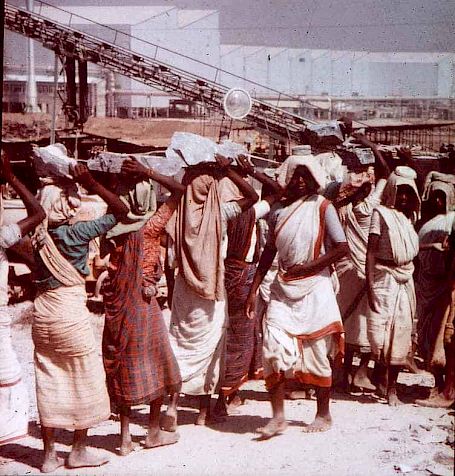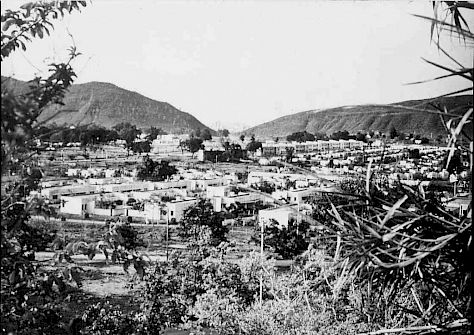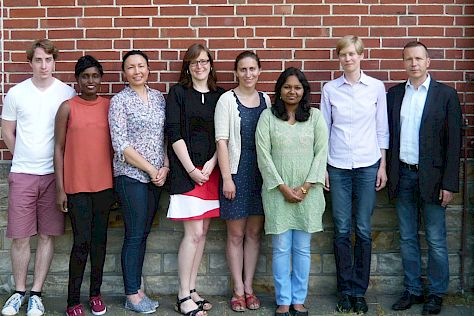From Swadeshi to GDP: Discussing India's Paths to Development With Corinna Unger
India, or so the geopolitical soothsayers tell us these days, is on the rise. Soon to be the world's most populous country, since liberalization in the early 1990s, the South Asian giant has seen rates of economic growth that approach China's. And while regional frozen conflicts like Kashmir, internal guerilla movements, and the decades-long rivalry with nuclear Pakistan do not leave New Delhi with a no-problems neighborhood, India has mostly managed to avoid troubling its neighbors too much. With an aggressively re-assured nationalist Prime Minister in Narendra Modi and with aspirations of, someday, becoming a upper-income country, seeming less far fetched than in a long time, India appears to have escaped the centuries-long reputation of being a place of hunger and famine.
For those days are not far removed. As scholars have shown, not only was the late British period marked by deadly combinations of market forces and climatic event that devastated Indian farmers; as late as 1943, the Bengal Famine wiped out three million people in eastern India. After independence from the British in 1947, independent India's leaders like Jawaharlal Nehru made it a point to turn the agrarian nation into an industrial country, turning to outside powers like the United States, the Soviet Union, West Germany, and others, to build turnkey steel plants. At the same time, as we have seen in early Toynbee Prize Foundation interviews, agriculture and the transformation of Indian communities formed a crucial arena of developmental politicking, too. India had global significance, too, for not only was it seen as a crucial "swing player" in a Cold War world seen as threatened by a massive Communist Bloc; more than that, the sheer size and scale of the place made it a gigantic laboratory for various models of economic development often first pioneered in the Global North.
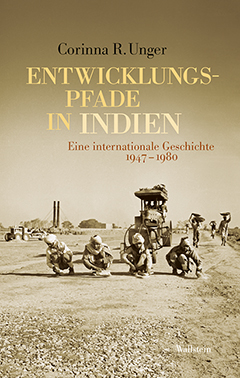
Still, as Cold War diplomatic archives have opened their doors only recently–and as historians have also only relatively recently recognized the quest for socioeconomic development as a legitimate object of study–our knowledge of how undeveloped nations became "developed," or "developed" themselves remains clouded. Until, that is, a book like Corinna Unger's Entwicklungspfade in Indien. Eine internationale Geschichte (Developmental Paths in India: An International History) appears. In her book, published this year with the Wallstein Verlag, Unger, a Professor of History at the Jacobs University in Bremen, Germany, explores India's engagement of foreign expertise (especially that of the United States and West Germany) from 1947 to 1980.
More than diving further chronologically into the history of development than many works, Unger's work sets itself apart from much of the historiography by showing how many macro-narratives of development, like the Green Revolution or the perception of urban slums as spaces of rural-to-urban economic transition, emerged during the years after the romance of steel plants and hydroelectric dams lost its luster. Based on exhaustive research across multiple continents, Unger's work sheds a light into the international history of development–and into the biography of an Indian state and economy that now looks, less nervously in the past but still not without anxiety, towards "growth," "modernization," and "development" as key markers of the nation's progress. We had the chance recently to sit down with Professor Unger to discuss some of the themes in her recent work–and how she came to it in the first place.
•
We start our conversation by asking Unger about her road to history as a profession. That path, she explains, was not foreordained, but rather one of a growing interest sustained by trans-Atlantic connections. Born in Munich and raised in Essen (in western Germany's Ruhr region), Unger was interested in history from the get go, and like many German students, her entry-point to the field was through German national history. She started studying in that field at Freiburg (in southwest Germany) and Berlin, then took the opportunity of a Fulbright Scholarship to spend a year in Albany, New York (thus crossing paths, if unintentionally, with another GHF interviewee, Ryan Irwin). Thanks to work with scholars like H. Peter Crosby and the integrated approach of American history departments (i.e. historians of China, Brazil, and the USA under one roof), Unger was exposed to a different approach than the one she had learned in Freiburg and Berlin. Not only that, she jokes, her Atlantic crossing made her aware of the very different prose styles that govern the discipline on both sides of that ocean. "I would present my professors with papers that were outlined – section 1A, 1B, 1C, 1D, and so on – and they would come back to me, saying, 'This is so German!'" She paused at first, but soon realized it was a compliment, meant as a point of contrast with the more impressionistic American historical writing style.
Soon, however, the values of both approaches came together. Having discovered the German and Jewish Intellectual Émigré Collection at SUNY Albany, Unger became fascinated with the history of German-language exiles, and eventually wrote her master's thesis on the topic. Still, Unger notes, as she returned to Germany, she still thought of herself primarily as a historian of Germany (if less consciously in a national history frame than she might have presented herself a year or two earlier). This subtle shift reflected itself in Unger's choice of subject for her PhD dissertation, supervised by historian Ulrich Herbert. In it, she traced the history of West German research in so-called Ostforschung ("Research of the East")–how postwar West German academics and research institutes conceptualized the study of the Soviet Union and Soviet-occupied Eastern Europe. That research took her not only to German state archives, but also to the collections of research institutes in university centers like Tübingen (of which more in a moment). After much work, she had her dissertation published in 2007 with the Franz Steiner Verlag as Ostforschung in Westdeutschland. Die Erforschung des europäischen Ostens und die Deutsche Forschungsgemeinschaft, 1945-1975 (Eastern Research in West Germany: Research on the European East and the Deutsche Forschungsgemeinschaft).
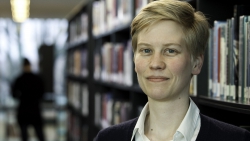
Soon, however, the American sirens came calling once more. Unger took up a postdoc position at the German Historical Institute in Washington, DC. While there, she gained further insight into the ins and outs of German-American scholarly exchange (the GHI was a hub for German to English scholarly translations and many conferences in both national historiographical fields), but she also began working on her next project on the history of West German development and modernization projects in the so-called Third World. The reasons for following this research agenda were twofold. Firstly, notes Unger, the early 2000s were a time of great excitement in that subfield, as scholars like Nick Cullather, Michael Adas, and Michael Latham began re-clarifying the historical importance of "development" as a concept in American foreign policy in the 1960s in particular. Comparatively little work, however, had been done in the field apropos the story of German, or, more generally, European development assistance, leaving a hole that someone like Unger (familiar with the German archives and a stone's throw away from the US National Archives) could help to fill.
Secondly, however, when Unger dug through her notes from the project on Ostforschung, she noted something unusual. Some of the Ostexperten she had investigated began their careers (often during the Weimar Republic) as specialists on Russian and Soviet history, politics, and the economy. Many, moreover, had socialized in an interwar academic milieu in which sometimes völkisch (right-wing nationalist and often racialist) politics got mixed up with scholarship. Following the collapse of the Third Reich and the reintegration of a West German state with international life, however, many of these men became consultants and specialists for postcolonial agricultural and development policy in Asian countries in the 1950s and 1960s. (Readers of the Global History Forum will note some echoes here with historian Adam Tooze's current research on German agronomy and development.) Not only was there much interest in the field, in short, but Unger had identified a way to link that growth with her own expertise and background as a scholar.
But how to narrow it down? The postwar Federal Republic of Germany engaged, after all, in dozens of countries, and a comprehensive study would have been over-ambitious. Soon, then, Unger landed in Berlin and began digging through both the files of the German Foreign Office as well as the files of the West German economic and development ministries, plus the archives of major West German political parties (located in Koblenz, in western Germany and just upriver from the former West German capital of Bonn). What she found there–among thousands of files covering everything from Argentina to Zimbabwe–was a special preoccupation with India as a major field of West German engagement. Independent India, lest one forget, was seen by many during the 1950s and 1960s as a major swing player in the perceived battle for or against "world communism" or "imperialism," since it was the largest non-Communist country and itself pursued a middle path of non-alignment and a less-than-full embrace of the market (while also not accepting the Soviet command economy). Not only did India contain as many or more poor people as the rest of the world combined, quantitatively speaking; more than that, its geopolitical position and ideological self-fashioning made it a site of special interests for economic and, one might add, epistemological interventions from both the socialist East as well as the capitalist West.![]()
Indeed, it is this concept of knowledge transfers (Wissenstransfer), and the motion of bases of knowledge (Wissensbestände) that informs Entwicklungspfade more than anything. Having engaged with the field of science and technology studies (STS), notes Unger, she had become familiar with postcolonial critiques of developmentalism – namely, that Western "aid" not only failed to deliver upon its promises of economic growth and/or reduced poverty, but that it also constituted a new kind of epistemological domination of "authentic" subaltern knowledge. While Unger was sympathetic to the sensibilities behind this line of argumentation, the more she looked at the history of development in India, the more she discovered a complex story, whereby "foreign" forms of management or economic organization were often domesticated into Indian economic life.
Take agricultural credit cooperatives, she explains. Invented, in part, in industrial-era Germany by Friedrich Wilhelm Raiffeisen to protect and support peasants, cooperatives were "exported" by the British into colonial India. So far, so foreign. But the story doesn't stop there. During the 1920s and 1930s, Indian nationalists valorized cooperatives as an ideal example of authentic, self-sufficient Indian life. And following independence in 1947, not only did Nehru's government not do away with the cooperatives, it embraced them as a tool of political and economic organization. In short, ideas about what constituted best practice for economic organization were not like a French Champagne, "authentic" only if they came from a native region of appellation and only then to be imported to buyers' markets. Instead, even if ideas like cooperatives emerged in the modest (and in many ways decidedly un-Indian) locale of mid-nineteenth century rural Germany, the cooperative form itself could migrate and become, with time and no small amount of nationalistic opportunism, Indian.
We pause to ask Unger: does she have any special advice for people just beginning a major research project? What did she learn from the research behind Entwicklungspfade in Indien? "If I could have done it again," she replies, "I would have gone to the archives in India earlier. I started my research in Berlin and Washington," she explains, "and by the time I did go to Delhi, the book had taken a particular shape." By the time she did make it to India, Unger faced the challenge of integrating sources from the Indian National Archives and the Nehru Memorial Library into an existing "base" of not only German but also American and international sources (the US National Archives, the Food and Agricultural Organization, and the International Bank for Reconstruction and Development, otherwise known as the World Bank). She stresses to earlier-career scholars that the quantitative number of sources she could glean from one archive or the other was not the most important factor. "Sometimes the sources that are hard to get, or the archives where you only find a few things, quantitatively speaking, turn out to be the most interesting sources." The hard facts of archival access in the Global South, in short, not to mention the space and time needed to read in languages like Hindi (much less Amharic, Vietnamese, etc.), remain obstacles to good work in international history–but rather than admit defeat early, scholars need to take these questions into account in their research strategy from the very beginning of a project.
In any event, having collected her sources from around the world, Unger (by now installed at the Jacobs University in Bremen, and then along with her colleague Marc Frey and Toynbee Prize Foundation President Dominic Sachsenmaier) began writing the book. Entwicklungspfade is broken down into two parts: one focusing on rural development through cooperatives, community development, and the Green Revolution, and another focused on urban development through planned cities like Chandigarh and Rourkela and the "management" of existing urban centers like Kolkata. This bipartite division might seem artificial from the perspective of today's reader familiar with debates about development. Today, after all, with megacities like Lagos, Karachi, or Shanghai blurring the distinction between rural and urban as millions of peasants become urban dwellers, it might seem overly schematic to draw a line between "city" and "country."
That's a point well taken, notes Unger, but for the historian it's an anachronistic view. During the period she investigates, especially the 1950s and 1960s, the divide between city and country was firmly entrenched in the minds of development specialists. Career tracks functioned according to this logic: if you were a specialist on boosting rice yields, it wasn't your responsibility to take into account where, exactly, all of those former rice-farming peasants were going to go if the number of man-hours needed to produce said rice dropped by a factor of five. And likewise, if your speciality was constructing barracks and roads to serve the company town around a steel plant, designing social services for a slum with population densities tenfold that of what you had trained for wasn't within your pay grade. Setting aside any more searching critique of the structure of the book aside for the moment, the real point here is an important one about the evolution of Western expertise on Third World societies in general. At least in the case of India, it wasn't until the late 1960s that the factual unity of city and country made itself known, and until according shifts in the management of Third World poverty effected themselves within the development profession. As Unger shows in her case study of Kolkata, for examples, not until the mid-1970s did slums go from being viewed purely as a negative space (better to be replaced by Le Corbusier-style high rises!) to an imperfect, but important part of the integration of low-income rural dwellers into the low-middle-income city.
Moving on, and given Unger's focus on the United States and West Germany as developmental actors in India, we ask her a new question: what were the major differences between the two countries in conceptualizing change and growth in India? "The differences appear not nearly as big as the similarities," she replies. "To take perhaps the most important test here, I am not confident that an Indian on the ground could have told you the difference between whether a project was Japanese or Norwegian, much less American or West German." The most important shared value, she adds, "was the universal conviction that economic growth–that is, not radical redistribution–was the only acceptable solution for India's poverty."
But she adds another point that historians of development would be wise to take to heart. "Insofar as there were differences between these groups, they were mostly in the minds of the actors themselves. West Germans might have come to India with a kind of European exceptionalism of, 'We're not colonialists.'" Reading the sources, however, one has to be carefully not to make the same "mapping" of mentality onto project that one's object of study so often did. Finally, she notes, generational differences were an important factor intersecting these above concerns. People who actually fought in the Second World War, or who had a real living adult memory of interwar fears of the "spread of Bolshevism," could take remote Indian villages more seriously as a theater for the Cold War. Later, by the late 1960s, Unger notes, one sees a turn towards a more shared technical discourse–a by-product of détente, sure, but also of an emerging cadre of developmental specialists for whom the generational battle against Communism was anything but.
This brings Unger to another important methodological observation that informs the book: where is the Cold War in all of this? Indeed, what of her periodization (1947-1980)? "One could have taken this book to 1989, or 1991," says Unger, "but I'm skeptical that the story of development in India was solely or primarily a Cold War story." As a growing number of scholars have argued in recent years, not everything that happened in the world from 1947, or 1949, to the late 1980s, was produced by "the Cold War." She is, she notes, skeptical of efforts to shoehorn events into the paradigm of Soviet-American confrontation, and adds that part of the logic of India's leadership of the Non-Aligned Movement was to escape this binary logic altogether. Tellingly, for example, even as India signed a mutual defense treaty with the Soviet Union, New Delhi's goal in the 1970s and 1980s was not to seek the end of global capitalism, but rather more likely to put pressure on its arch-nemesis Pakistan and exploit Soviet security guarantees to improve Indian influence in a belt from Iraq to Indonesia. Framing the Indian intervention into Sri Lanka, for example–an adventure that ended with the assassination of Rajiv Ghandi–in terms of Soviet-American confrontation makes little sense. Likewise, even as fears of Soviet influence were part of what brought Americans and West Germans to post-colonial India, the Cold War was not the only thing that brought them there.
•
This growing authority to locate German history in an international context–and to distinguish "the international" from the Cold War–are all signs of a scholar well on her way to leaving her mark in the field. Now, with Entwicklungspfade well off the presses, Unger (who starts a new position next year at the European University Institute in Florence, Italy) has a couple of new projects underway. Thanks to the funding of the Volkswagen Foundation, she and her colleague Marc Frey (himself now at the Universität der Bundeswehr in Munich) are directing a research project on the international history of rural development – a project that has clear connections with Unger's work on India, but in many ways promises to go beyond it. "Historically, when it came to the literature on development," explains Unger, "the typical picture was one of steel mills and cities." But, she adds, most poor people lived in rural environments, and huge amounts of development funding, as scholars like Nick Cullather and Daniel Immerwahr (interviewed by TPF here) have shown, went into the modernization of agriculture and villages, not just planned cities. Unger and Frey's project involves deep studies of five different national contexts and/or institutions: the World Bank, the Green Revolution and Multi-National Corporations, the Virgin Lands Campaign in Soviet Kazakhstan, Rural Community Development in independent India, and the Office du Niger project in pre- and post-independence Mali.
More than just re-examining this forgotten page in the history of development, however, the project proposes to continue the story into the 1980s, questioning the meaning of so-called neo-liberal development. "We have a picture of neoliberalism," explains Unger, "that revolves around the Chicago Boys, of financial missionaries enforcing austerity policies and privatizations." That might be part of the story, but such a picture is also suspiciously urban and Western in focus, even when many of the countries subjected to the Washington Consensus were overwhelmingly rural and situated in the Global South. Part of Unger's ongoing research will explore the history of the global countryside during the late 20th century, then, both during the period of "high developmentalism" we know much more about than a decade ago–and the situation of the 1980s, which remains something of a historiographical black hole.
Fortunately, however, Unger does not lack for models and inspirations to guide her ongoing research. Asked what works she looks forward to reading–or works that have recently inspired her–she does not hesitate to mention several. She names Susan Pedersen's The Guardians (the focus of our most recent Toynbee Prize Foundation Global History Forum feature) as the work occupying the "to read next" spot in her bookshelves, but several other works are right behind it. Most recently she has been reading a book by Jürgen Dinkel, a scholar of international history at Gießen (in central Germany), on the Non-Aligned Movement (NAM). In the book (Die Bewegung Bündnisfreier Staaten/The Non-Aligned Movement), Unger explains, Dinkel traces the growth of perhaps the most significant anti-imperialist movement in twentieth century history, locating the NAM in a longer story that begins with groups like the League Against Imperialism in the 1920s, and taking the narrative arc through the present day. Finally, she also names George Steinmetz's Sociology and Empire and Julia Tischler's Light and Power for a Multiracial Nation as two other works that have captured her attention. Here's hoping they find a spot on the bookshelves of Global History Forum readers soon, too.
For the moment, however, the book to follow is Unger's Entwicklungspfade in Indien, which has just been published by the Wallstein Verlag and which we hope finds translation into English and other languages shortly. Indeed, our conversation with Professor Unger has taken us across not only the German and English languages and across the Atlantic, but also between countries and scholarly fields. Unger's work highlights some of the best trends in international history today, and we are excited to see where her inspiration takes her next. For the moment, however, we thank her for taking part in this installment of the Global History Forum.

